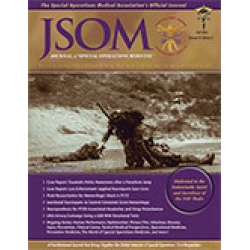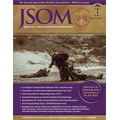Fluid Resuscitation for Hemorrhagic Shock in Tactical Combat Casualty Care: TCCC Guidelines Change 14-01 - 2 June 2014
Butler FK, Holcomb JB, Schreiber MA, Kotwal RS, Jenkins DA, Champion HR, Bowling F, Cap AP, Dubose JJ, Dorlac WC, Dorlac GR, McSwain NE, Timby JW, Blackbourne LH, Stockinger Z, Strandenes G, Weiskopf RB, Gross K, Bailey JA 14(3). 13 - 38 (Journal Article)
This report reviews the recent literature on fluid resuscitation from hemorrhagic shock and considers the applicability of this evidence for use in resuscitation of combat casualties in the prehospital Tactical Combat Casualty Care (TCCC) environment. A number of changes to the TCCC Guidelines are incorporated: (1) dried plasma (DP) is added as an option when other blood components or whole blood are not available; (2) the wording is clarified to emphasize that Hextend is a less desirable option than whole blood, blood components, or DP and should be used only when these preferred options are not available; (3) the use of blood products in certain Tactical Field Care (TFC) settings where this option might be feasible (ships, mounted patrols) is discussed; (4) 1:1:1 damage control resuscitation (DCR) is preferred to 1:1 DCR when platelets are available as well as plasma and red cells; and (5) the 30-minute wait between increments of resuscitation fluid administered to achieve clinical improvement or target blood pressure (BP) has been eliminated. Also included is an order of precedence for resuscitation fluid options. Maintained as recommendations are an emphasis on hypotensive resuscitation in order to minimize (1) interference with the body's hemostatic response and (2) the risk of complications of overresuscitation. Hextend is retained as the preferred option over crystalloids when blood products are not available because of its smaller volume and the potential for long evacuations in the military setting.


 Español
Español 




